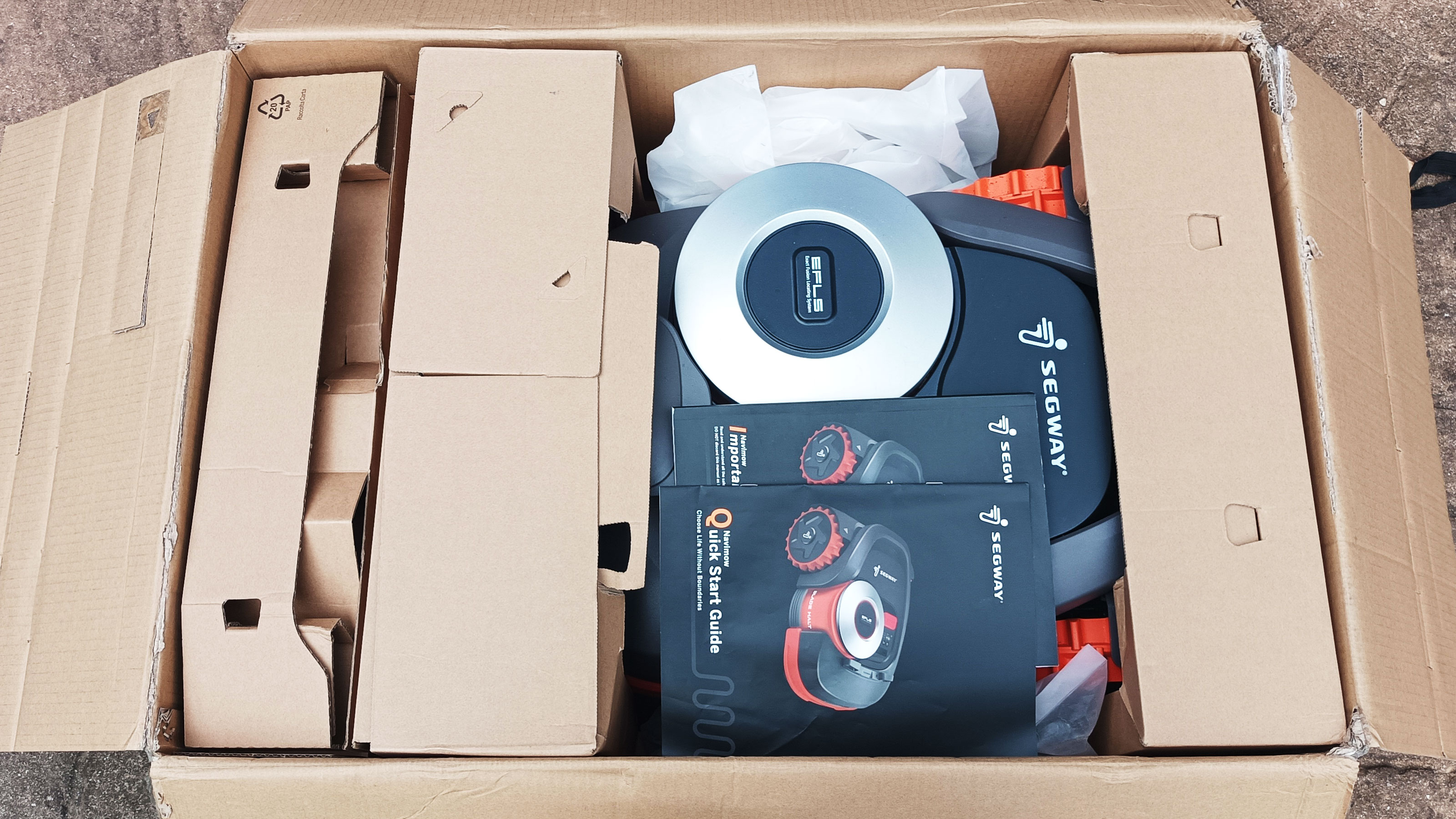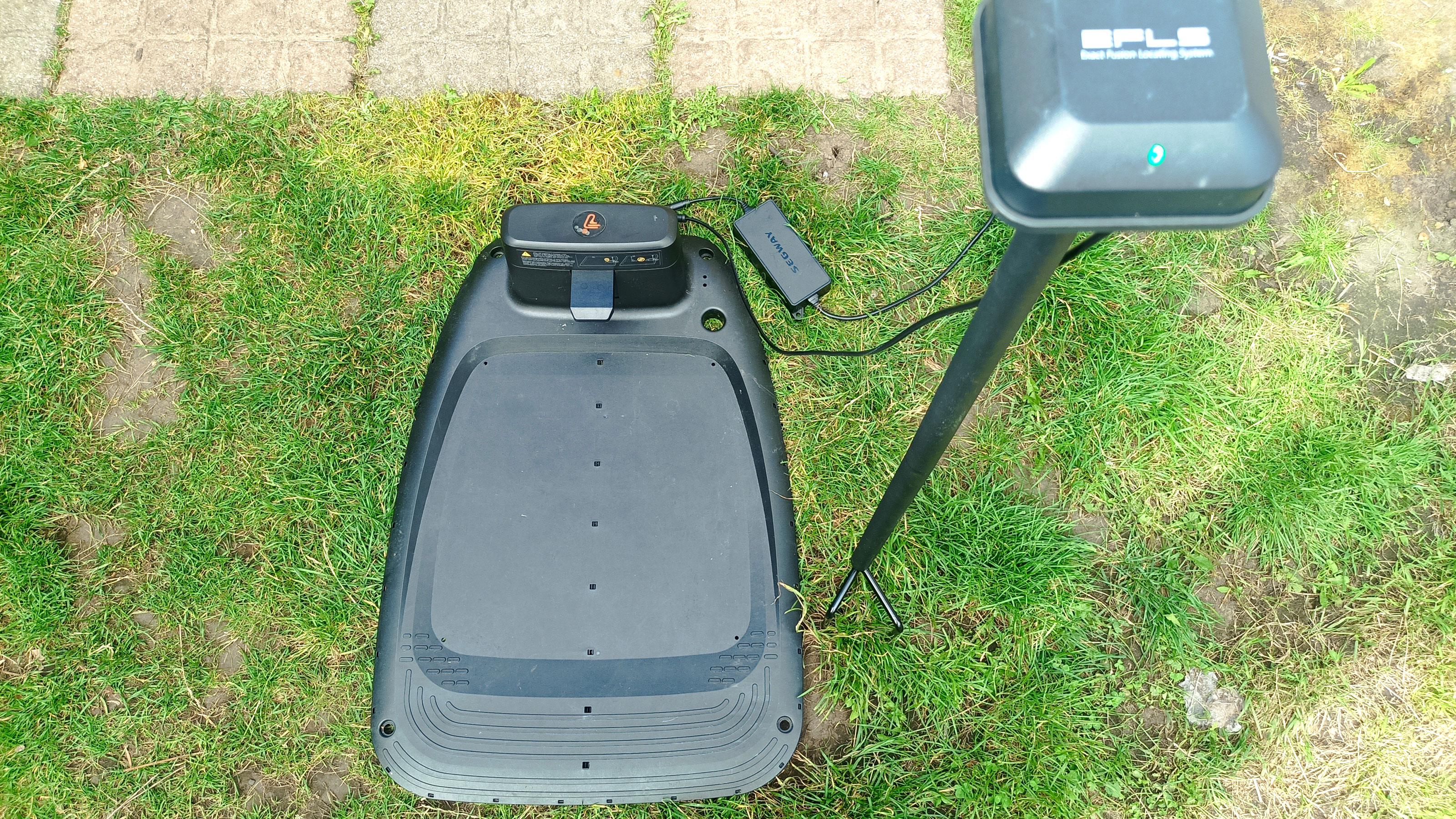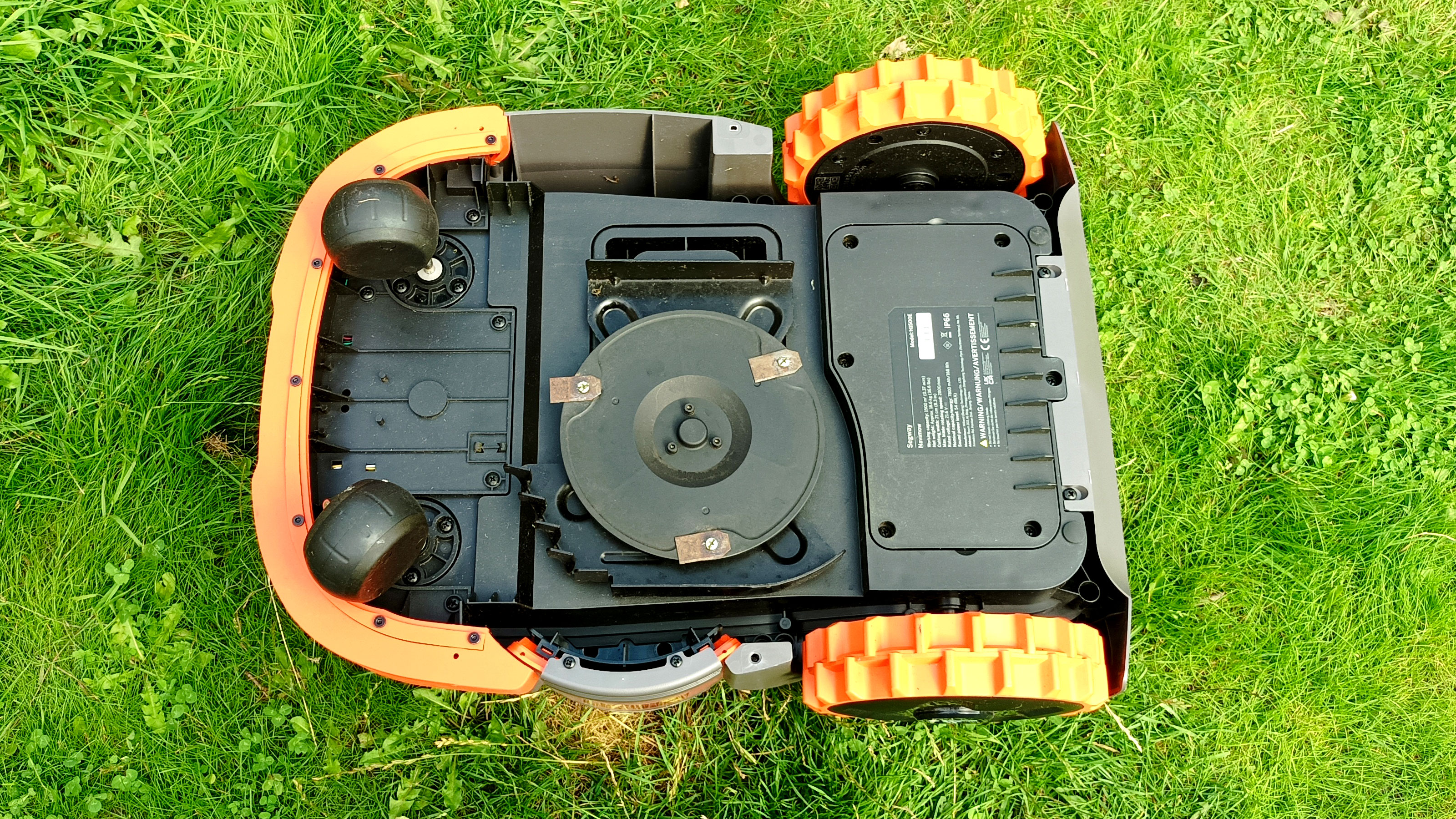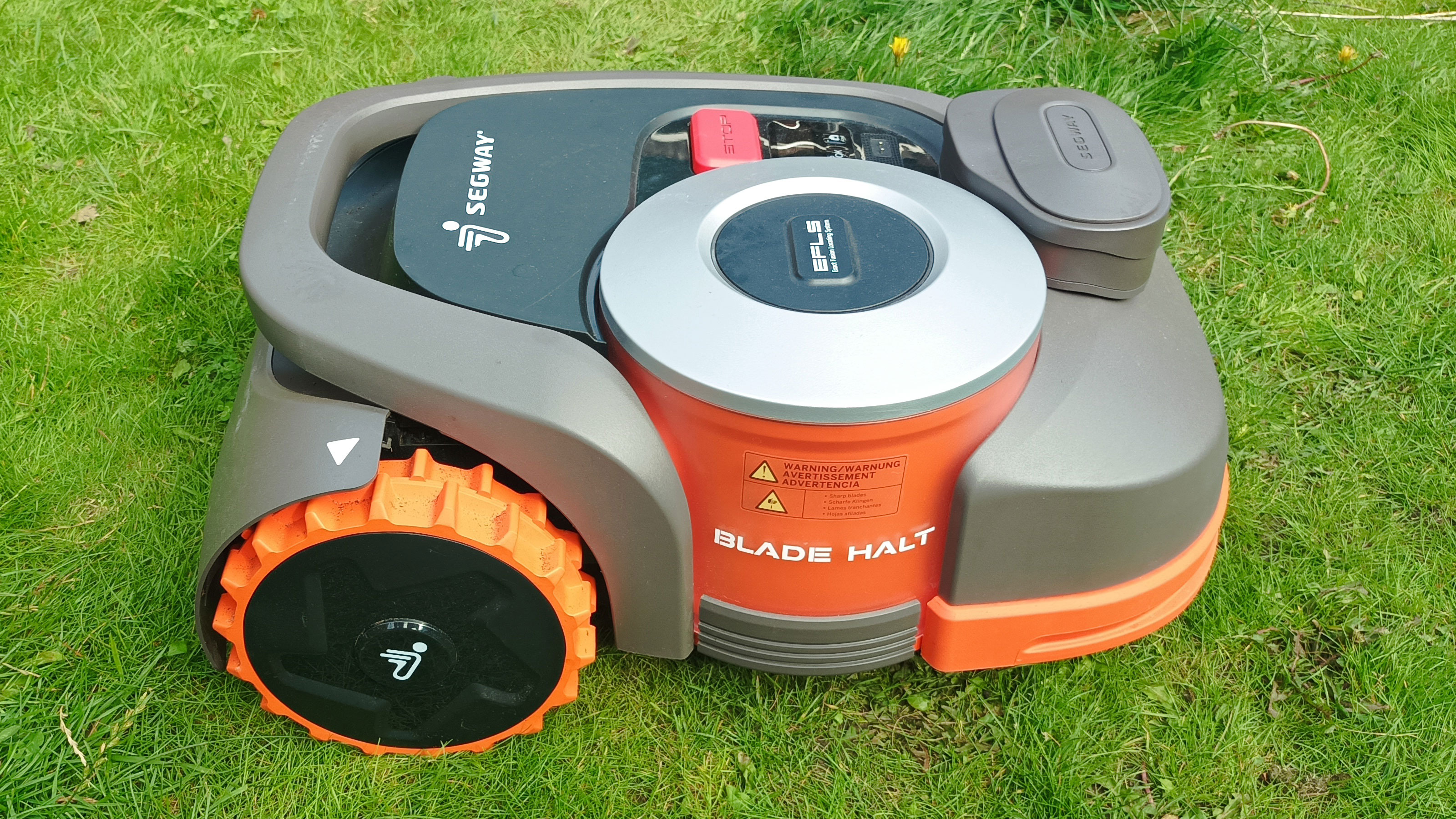Homebuilding Verdict
The Segway Navimow is a robot lawn mower that you will grow to love, especially if you never owned one before. It's easy to set up, but takes longer than suggested. But once past the initial setup and first few uses the Navimow comes into its own. But, you need a large garden - at least a couple of hundred square metres - if not more - to get good value out of the Segway. The Navimow is not cheap and like most mowers it still doesn’t reach every inch of your lawn.
Pros
- +
Virtual boundary (no wires)
- +
Waterproof
- +
Unattended hands free mowing
- +
Easy to use app
Cons
- -
No grass collector
- -
It’s not cheap
- -
Not for long grass
You can trust Homebuilding & Renovating.
The Segway Navimow H1500E is a robot lawn mower that looks like it’s bringing the future of lawn care to your garden today. No manual mowing, no pushing it around the garden. Once set up the wonders of WiFi, Bluetooth and GPS technology take over and do the hard work for you.
It's perfect if you are lucky enough to have a large lawn, the H1500E is built to cope with areas up to 1500m2. That’s almost 40m x 40m or approximately 130 ft x 130 ft in old money. More than enough poise and power to deal with my 40m2 suburban garden. But just to make sure I left the lawn to grow until it got to around 4-6 inches, only to discover that it needed to be cut back to 2.5 inches to get the best finish (more on that later).
Here I give you the lowdown on this future thinking robot lawn mower and reveal why the Segway Navimow H1500E could be a real alternative to the best cordless lawn mowers, especially if you have a garden large enough to fully appreciate its qualities.
First impressions of the Segway Navimow H1500E
● Lawn mower type: Robot mower ● Drive type: Automatic ● Cutting width: 21cm ● Cutting height: 30mm-60mm ● Weight: 16.5kg ● Rotary or cylinder: Rotary ● Warranty: 4 years ● Battery life: About 240 min ● Charge time: Constantly charging ● Noise: 54 dB(A)
Getting my hands on a no perimeter wireless robot mower for the first time was an exciting prospect and I had no idea what to expect. The first thing I thought when the Segway Navimow arrived at the door was that’s not a small robot lawn mower. It was delivered on a pair of trucks, so I wasn’t expecting a lightweight lawn mower that was going to be easy to move.
Admittedly at 16kg it wasn’t as heavy as I expected, but combined with the size of the box it needed two people to get it to the back garden (I didn't want to drag it).
The packaging is comprehensive but all recyclable and reasonably easy to fit back together when I put the lawn mower back in the box. The Segway Navimow is a good looking beast in contemporary orange and grey. It's not small though – measuring 60 × 46 × 26 cm – but it's robust and well built.
It’s a solid piece of machinery that looks like it's going to be with you a long time. The lifting handle is perfectly sized and feels like it's built to last and easily cope with being picked up regularly. One thing we did notice is that it didn’t have a grass collector. How was that going to work? Find out more later.

Setting up the Segway Navimow wasn't difficult but it wasn't quick either
Before setting up the Segway there’s a little assembly needed to get started. Looking in the box at the myriad of parts I was a little apprehensive but once I had whipped out the Quick Start Guide and started it was pretty simple. All you need is a screwdriver and a hammer (optional).
The three part antenna, charging station and power supply were all strategically placed as recommended. The manual suggests that you have no obstacles such as fences, walls or trees within two metres each side of the GNSS antenna. This can prove difficult in smaller gardens, so you might not get the exact location you want for the charging station. We had to do a little manoeuvring before we got it into a suitable position. We also needed to make sure that it was within range of the WiFI. So a little more manoeuvring was needed.
One thing that I found irksome was the short cord on the power supply. This made it difficult to plug in the power supply without being near a wall socket. I ended up using an extension lead but this wasn’t waterproof, so had to be regularly unplugged. A longer lead would have been nice.
With everything in position I installed the Navimow app (Android) to finish the setup. This was pretty straightforward with comprehensive instructions. You will need to Bluetooth to the mower, so you will need to be within 6m – or less – of the mower to get a connection.
You create a map by driving the Navimow around your boundary - the edge of your lawn – using the app. It’s fun, it's like controlling a remote control car. But spend time getting the map right, go back and redo areas you get wrong. It might take more time but it will be worth it in the end.
The set up took longer than the manufacturer suggested, but it still only took around 40 minutes. Admittedly, a lot longer than a cordless or petrol lawn mower.

Letting the Segway Navimow do the work for you
I had let my lawn grow to around 4-6 inches to give the Segway Navimow a good test. But reading the guide Segway suggested that the grass height should be a maximum of 2.4 inches (6 cm). The maximum cutting height on the Navimow is 60mm, so I thought I would try this height on my lawn. It worked to a certain degree, but struggled in places. So it was time to get out my Mountfield Electress 34 Li and put the ground work in.
With the grass at the recommended height, it was time for another go. I set the cutting height via the app to 30mm (the minimum available) and hit the Mow Now button. It was fascinating watching the Navimow, it started around the border, before creating the standard back and forth pattern across the rest of the lawn. The first cut wasn’t as clean as I hoped, so we decided to give it another two mows. By the time it had completed the third, the lawn was looking good. All you need to do is make sure that you cut regularly which is easy using the mowing schedule on the Navimow app. We set it up for twice a week. Like most mowers it didn’t cut right up to raised border edges so you will need a strimmer like the Ryobi 18V ONE+ Cordless Grass Trimmer from Amazon – which scored 4 out of 5 in Homebuilding & Renovating’s Ryobi 18V ONE+ Cordless Grass Trimmer review – to get the perfect finish.
I only have a small suburban garden – around 40m2 – so cuts took around 20 mins and used around 7-8% of battery life each time. So after three mows it used just over 20% of the battery. This works out roughly that a full charge can cover around 500m2 or more. But we never got to test this, because at the end of every mow the Navimow returned to the charging station and was fully recharged by the time it was called into action again.
If the Navimow gets stuck on a hidden obstacle (like it did in my garden) there is a big red stop button which you operate manually. This sits next to a small control panel that keeps you updated on the status of the battery, WiFi and there’s a PIN code to access the mower . You can change this via the app to keep it locked and safe from unwanted attention.

Taking care of the Segway Navimow
It’s easy to think that you can leave the Navimow and let it get on with its job. Set up a mowing schedule and forget about it, or whip out your phone and hit the Mow Now button and let it do its things. But you do need to check it on the Navimow every so often. Like all mowers it needs a clean and you will need to change the blades at regular intervals.
With a rating of IPX6 for the mower and IPX5 for the charging station and power supply, you can leave outside with few worries. IPX6 means the mower is protected against powerful water streams, which makes it easy to clean. I tipped up the mower and used a jet hose (not really high pressure) to remove dirt and grass from underneath. The IPX5 rating means that the charging station and power supply can be left outside and cope with the rain. We left the Navimow outside for two weeks with no problems.
There is no grass collector to clean or empty, the grass is left to mulch. So it's a good idea to mow once or twice a week to keep your lawn under control and looking good. The Navimow uses three small blades which are really quick and simple to replace compared with a standard mower. Depending on the size of your lawn and how often you mow will depend on how often they need replacing, but around every six months is standard.
The beauty of using the Segway Navimow is that you don't have to do any mowing. We found it very therapeutic to sit and watch it in action. But the setup process isn’t quick, but once done it's soon forgotten. And I love the fact I can press a single button and know my lawn is being mowed.
But you do have to pay heavily for the pleasure of owning the Navimow, its minimum cutting height is not as low as a standard mower, so you can’t get a real close cut and it's not a good choice for small gardens. But, if you have a large lawn and are happy to pay the premium price we say go and get one. We would.
About our review — and reviewer
Steven Jenkins is currently a freelance content creator with more than 20 years experience as an editor, writer, and reviewer. He has a passion for DIY, gardening Photoshop, AFC Bournemouth, home renovation and keeping his kids and dog off the grass, to try and keep his lawn looking lush.
Steve Jenkins is a freelance content creator with over two decades of experience working in digital and print and was previously the DIY content editor for Homebuilding & Renovating.
He is a keen DIYer with over 20 years of experience in transforming and renovating the many homes he has lived in. He specialises in painting and decorating, but has a wide range of skills gleaned from working in the building trade for around 10 years and spending time at night school learning how to plaster and plumb.
He has fitted kitchens, tiled bathrooms and kitchens, laid many floors, built partition walls, plastered walls, plumbed in bathrooms, worked on loft conversions and much more. And when he's not sure how to tackle a DIY project he has a wide network of friends – including plumbers, gas engineers, tilers, carpenters, painters and decorators, electricians and builders – in the trade to call upon.


